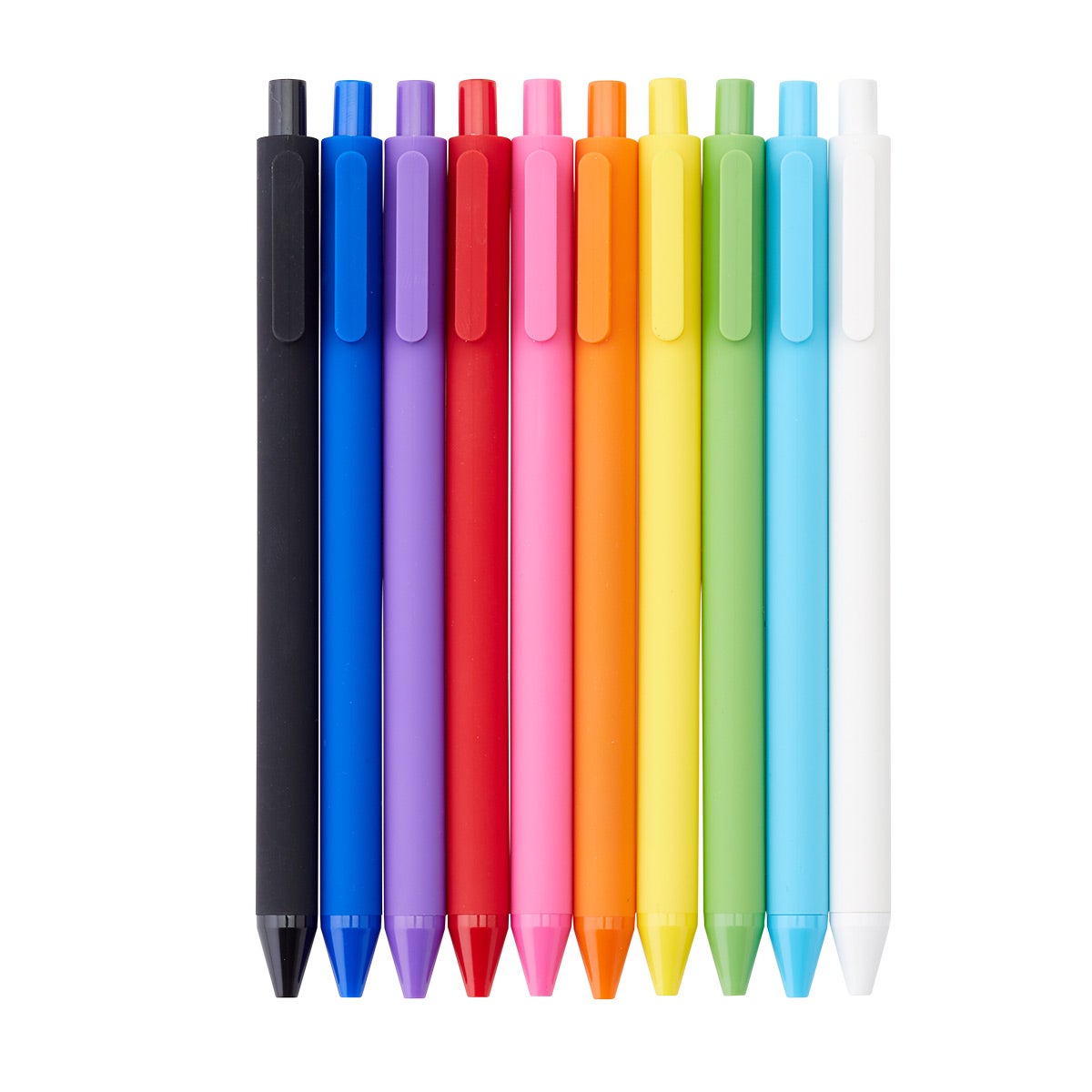Taking notes is a smart way to remember what we study, but using color-coded notes can make us even smarter and more organized thinkers. When we use different colors while writing, our brain finds it easier to sort, connect, and recall information. In fact, studies show that color improves memory performance by up to 80% and helps with visual learning, which is how many students learn best. According to research published in the Journal of Educational Psychology, students who used color-coded notes understood concepts 25% faster than those who didn’t. By using colors to separate important points, definitions, dates, and diagrams, we reduce confusion and save time while revising.
In this blog ‘Color-Coded Notes’, we will explore how using colors in your notes can improve your learning, improve your focus, and make studying easier and more enjoyable. This simple method not only makes studying more fun but also turns messy notes into clear, powerful tools for thinking better and learning faster.
This Blog Includes:
What are Color-Coded Notes?
Color-coded notes are a smart way of writing notes using different colors to organize information. Instead of writing everything in one color, you use specific colors for different types of content, like blue for headings, red for important terms, green for definitions, and yellow for examples. This method helps your brain quickly recognize, group, and remember important details. It’s not just about making notes look nice—it actually improves learning.
Here are some important points about color-coded notes:
- Better Memory: Studies show that using color in notes can improve memory by up to 80%, as our brain remembers colors more easily than plain text.
- Faster Understanding: Color helps students understand topics 25% faster, especially in subjects with a lot of details like science or history.
- Easy to Revise: During revision, color-coded notes help you find key information quickly without reading every line.
- Supports Visual Learning: Around 65% of students are visual learners, and colors help them grasp concepts more clearly.
- Reduces Confusion: When each color has a set purpose, your notes become more organized and less messy or confusing.
Quick Read: 140+ colour names in Hindi and English with Shades PDF
How to Color Code Your Notes?
Here is the ultimate checklist to color-code your notes in the best way:

- Use the Right Tools for Color Coding [highlighters, multi-colour pens, coloured pencils)
- Write First, Color-Code Next!
- Stick to a Constant Color Pattern
- Don’t Color Code Everything
- Create Your Unique Color Coding Key
- Organize Your Color-Coded Notes the Right Way!
- Use Dot Points for Color Coding
Color Coding Notes Key
Creating a color coding notes key can help you remember which color means what. like a color expert. You can create the key to your color coded notes classifying as per subject, points to remember or even the level of importance. Here’s an example of creating color coded notes key:

Save Yourself from Boredom and Map your Mind
Whenever you have to make notes that require your attention and concentration, it can get a bit boring. The process of making notes is a tedious one and can be quite monotonous. However, using colors to pen down points or important sections of the subject you are studying can increase and improve your interest in the procedure and make it less boring for you.
It is an established fact that using colors to structure your notes helps stimulate the creative side of your brain. Color-coded notes are very useful in distinguishing one theme from another and overall make the notes a visual delight! They look unusual and are easier to memorize.
Remember Who Said What and Why

If you make messy notes with a single monotone then memorising such notes can be difficult – defying the main purpose of taking down notes. The Senior Systems Engineer at Oracle, Chris Smith says that he uses four colours whenever he makes notes.
1. He uses red colour for action items for his team,
2. Black colour for general stuff,
3. Blue for the comments and notes of clients, and green for action items clients need to take on.
It is always better to pick your own set of colours to make colour-coded notes and go with the ones you like the most. It is advisable to choose colours that resonate with your memory.
Combine Colors
Just like we use different colors while coloring, mixing different colours while making notes helps in breaking up the monotony of notes. You can also use different colors to outline important points or make a difficult word stand out so that your eye can immediately go on it while going through your notes and helps you in remembering better.
Beware of Overdoing
While making color-coded notes an essential thing to keep in mind and remember is to not overdo the process of including colors in your notes. Coloring too much makes the notes look weird and out of place and distracting – which again defies the purpose of making notes in the first place. Color and highlight those points which are of priority and important to memorize. So, you must remember to use a restaurant while making color-coded notes and be mindful of not overdoing it.

Psychology Behind Color-Coded Notes
Colour coding your notes allow for selective attention to happen easier so that our brain has one colour to stick to. Colour coding notes help your brain learn the information easier hence it also helps you gain better marks in your school. Simply highlighting your notes, you can help yourself with memorization and retention.
Also Read: 99+ Psychology Facts About Human Behaviour
Recommended Pens
Here are some of the recommended pens for colour-coded notes:

- Paper Mate InkJoy Gel Pens
- Taotree 24 Fineliner Color Pens Set
- Crayola Colored Gel Pens
- Pentel R.S.V.P. Ballpoint Pen
- PILOT G2 Premium Rolling Ball Gel Pens
- iBayam Journal Planner Colored Pens
- Kaco Retractable Gel Pens
- Zebra Pen Mildliner and Highlighter
- Staedtler Triplus Fineliner Pens
- Mr. Pen No Bleed Pens
- Paper Mate Flair Felt Tip Pens
- STABILO Point 88 Fineliner Pens
Tips on Creating Color-Coding Notes
Here are some important tips that will be of help to you while making color-coded notes:
- Color-code after initial note-taking: Often we may be tempted to color-code while making notes in the middle of an important lecture or class, however, this can be counter-productive. Always color-code your notes once you have finished taking down notes. It should be done without interrupting or halting the process of getting information from a textbook or during a lecture. After taking your main notes, you can use a color-picker tool to choose precise colors and ensure consistency across all your notes.
- Be Consistent: The colors you choose for a particular thing, whether it is red for facts, blue for action or items, remember to use the same colors throughout your notes. It is extremely helpful to keep a table in front of you that has a list of categories along with their corresponding colors. By doing this you will avoid unnecessary confusion.
- Select the Right Tools: Always remember to choose the right tools while making color-coded notes. Use them to make important points, change the color of the text and create borders between a section of notes. The right tools for having color-coded notes are: Multi-colored pens, fluorescent-coloured highlighters, color-pencils for coloring and shading areas in and around the important text.
- Limit Your Color Palette: If you introduce more than three to four colours, you will complicate your notes and make it confusing to look at and memorize. Use colors in contrast with each other to highlight to make the important text stand out.
- Do the process of color-coding judiciously: Use color-coding only to highlight the most important pieces of information. If you will color or highlight the entire text, you will not be able to distinguish one part from another and keep an eye on the information that is of priority.
Must Read: What is the Best Posture for Studying?
FAQs
Color-coding notes is important because it helps you organize information clearly, making it easier to understand and remember. Using different colors for headings, facts, or examples allows your brain to quickly spot and connect ideas, which saves time while revising. It also makes your notes look neat, reduces confusion, and supports better focus—especially if you’re a visual learner.
Colorful notes help students learn better by making information easier to understand and remember. They make your notes more organized, so you can quickly find key points while studying. Colors also make learning more fun and keep your brain focused. Research shows that using colors can improve memory, support visual learning, and help you study faster and more clearly.
Color coding helps learning by making it easier for our brain to see, sort, and remember information. When we use different colors for headings, key points, and examples, it helps us organize thoughts clearly and find important details faster. Studies show that colors can improve memory and focus, especially for visual learners. It also makes studying more fun and less boring, helping students stay interested and learn better.
Color coding is important because it helps you organize information clearly, making it easier for your brain to see, understand, and remember things. Using different colors for headings, key points, and examples helps you focus better, find information faster while revising, and reduces confusion. It also supports visual learning and makes studying more fun and effective.
The purpose of color coding your writing is to organize information clearly and make it easier to remember. Using different colors for headings, key points, definitions, and examples helps your brain quickly understand and recall important details. It also makes studying faster, reduces confusion, and keeps your notes neat and easy to review.
RELATED BLOGS
| 50+ Questions of Verbal Analogies | 50+ Idioms and Phrases Questions |
| Practice 100+ General Knowledge Questions and Answers for Competitive Exams | 50 Sports GK Questions For AFCAT, CDS, and NDA |
| 50+ Reported Speech Questions | 20 + Paper Cutting Questions and Answers |
This was all about making and organizing color-coded notes. We sincerely hope it helped in providing you with the information that you needed and sorted out any confusion that you had in your mind. For more such education and interesting content, stay tuned to Leverage Edu.

 One app for all your study abroad needs
One app for all your study abroad needs






















 45,000+ students trusted us with their dreams. Take the first step today!
45,000+ students trusted us with their dreams. Take the first step today!


